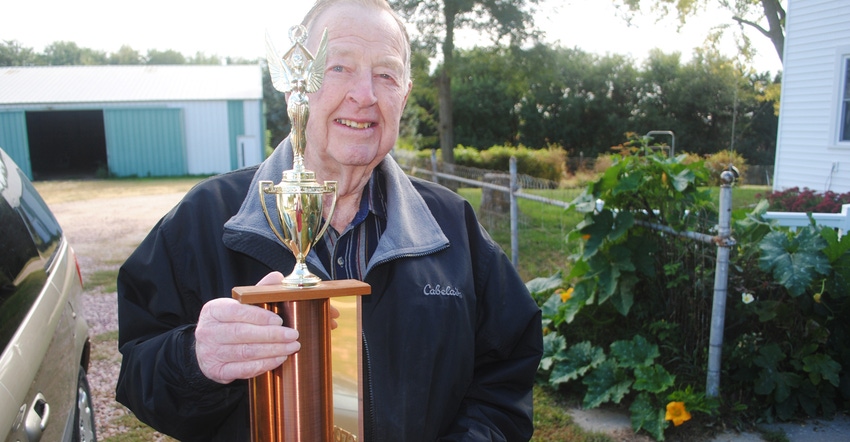October 8, 2018

You may have read over the past few months in Nebraska Farmer that editor Tyler Harris and I are participating in the grain sorghum division of the University of Nebraska TAPS interactive farm management competition.
That doesn’t mean that Tyler and I planted sorghum and are out in the field managing it every day. It just means that we are managing and marketing production from a small test plot at the West Central Nebraska Research and Extension Center at North Platte on paper only, allowing the fine educators and technicians at the Center to carry out our decisions.
At this point, we don’t know how we will place or what our little field will yield this season. However, the competition has been a learning experience for both of us.
When I was farming, my dad liked to talk about the dry growing seasons in the 1950s when he raised grain sorghum with my grandfather. Most of those stories related to how sharp and cutting milo dust can be around the eyes and neck when you are harvesting the fields with an open-air combine. He also talked about ice and snowstorms taking down the sorghum heads and making harvest a slow, tedious proposition late into the harvest season.
When corn prices dipped below $2 per bushel in the early 1990s, we dabbled in grain sorghum again for a few years, with encouraging results. So, I was quite honored the other day when Harold Brunssen, who farmed for many years near Belden, Neb., dropped by my farm to talk about sorghum.
Brunssen raised grain sorghum on his Cedar County farm from 1962 until 1982. During that 20-year span, he garnered the Nebraska state championship trophy for sorghum production in 1972 with 142 bushels per acre on dryland. He told me that he raised the sorghum to feed to livestock, because the energy content was just slightly short of corn.
Although there wasn’t a lot of sorghum raised in Cedar County in those years, Brunssen was fond of the crop because it yielded well under tough conditions, provided stalks for grazing cattle in the winter and had good feed value.
The root system on grain sorghum tolerated drought well, even in extremely dry years like 1968, when Brunssen recalled yields of 65 bushels per acre on sorghum, but only 2 or 3 bushels per acre on soybeans and little to nothing on corn.
Harold also remembered some of his favorite sorghum varieties like the old Northrup King 222 and Dekalb 38. Weed control was crucial, Brunssen told me. If he saw a stalk of shattercane growing in the field, he would cut it out and carry it away from the field to prevent spread.
These days, grain sorghum is making a comeback across the Great Plains. Farmers living in drought-prone regions or with irrigation water restrictions know that grain sorghum takes about half as much water to produce that first bushel of grain, compared to other crops like corn.
Kansas tops the charts as the sorghum-producing champion, but it is followed closely by Texas, Arkansas and Nebraska. Today, states like Colorado, Oklahoma, South Dakota and Missouri also grow their fair share of sorghum.
I wish Brunssen had stopped by our farm sooner in the year. I may have picked his brain for management tips going into the TAPS competition. Our Nebraska Farmer team may not win TAPS this year, and I’m glad we don’t have to harvest it ourselves in a combine without a cab, like when my father was young.
However, it is nice to see enthusiasm for the crop in folks like Brunssen who raised it successfully years ago, and in new producers who are giving grain sorghum another look because of the crop’s many attributes.
You May Also Like




